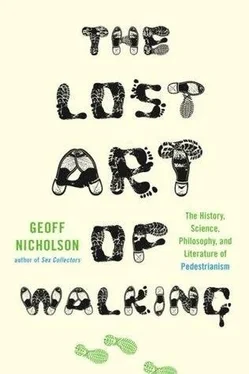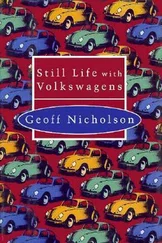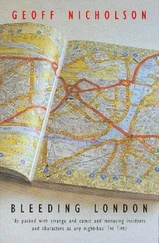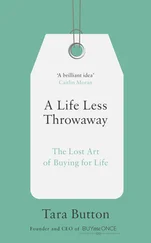— IAIN SINCLAIR
One wet Sunday afternoon in the autumn of 1804, Thomas De Quincey, age nineteen, and later to become the author of Confessions of an English Opium Eater , was walking along London’s Oxford Street and finding it every bit as bleak and depressing then as many still do to this day. In order to cheer himself up he went into a druggist’s shop (‘The druggist, unconscious minister of celestial pleasure’) and bought himself a tincture of opium. That brightened up his day no end. It was the beginning of De Quincey’s love affair with opium and a continuing part of his love affair with walking the streets of London.
Later he would write:
‘And sometimes in my attempts to steer homewards…I came suddenly upon such knotty problems of alleys, such enigmatic entries, and such sphinx’s riddles of streets without thoroughfares, as must, I conceive, baffle the audacity of porters, and confound the intellects of hackney-coachmen. I could almost have believed, at times, that I must be the first discoverer of some of these terrae incognitae , and doubted whether they had yet been laid down in the modern charts of London.’
Of course, opium is generally not a big help when it comes to finding your way home, but he may be speaking metaphorically here. It seems impossible that he was the very first person ever to have set foot in any given location, although it remains perfectly possible that he was walking in a place for which a map hadn’t yet been drawn.
De Quincey’s fantasy of an unknown London is an attractive one, since London is, in every sense I can think of, well-trodden territory: a place of walkers, with a two-thousand-year-long history of pedestrianism. I’ve trodden it as widely and as well as I know how, but like every London walker, I realize that I’m always walking in somebody else’s footsteps. No part of London is genuinely unknown. However obscure or hidden the place, somebody has already discovered it, walked it, staked a claim on it. Your own exploration therefore has to be personalized — you’re doing it for yourself, increasing your own store of particular knowledge, walking your own eccentric version of the city.
The first London walkers had to be the Romans, since before them there was no London (or Londinium), just expanses of marsh and swamp, thinly inhabited by surly, saturnine Iron Age Brits. Maybe the Brits walked, but they didn’t walk in anything called London. The Romans invaded Britain for the first time in A.D. 43, probably used a pontoon bridge to cross what was to become the river Thames, then a few years later built the first permanent bridge across it, thought to have been just east of the present-day London Bridge. People could then walk from one side of the river to the other, if they chose, though then as now quite a few probably chose not to. North and South London continue to be inhabited by very different tribes.
The Romans weren’t meanderers. Their walking was straight and direct, taking the shortest distance between two points. One of the first things English schoolkids learn is that the presence of a long straight road means the Romans were here. You don’t need a highly developed sense of history to enjoy knowing that you’re walking the same route that some legionnaire or proconsul walked nearly two thousand years ago.
Inevitably the growth of London, the change, the decay, plus a certain amount of bombing and urban redevelopment, has tended to obscure the Roman origins of the city, but even in central areas it’s not so hard to walk along what was once a Roman road. De Quincey’s Oxford Street, now a major shopping artery, and by many accounts a crass, soulless, overcommercialized place (but more of that later), was once part of a Roman route connecting Hampshire to Suffolk.
At this very moment somebody is out there walking the streets of London, consciously following in ancient Roman footsteps, trying to make a connection with some imagined Roman imperial past. I say this without much fear of contradiction, because I know that London’s streets contain walkers of every description, each of them pursuing separate destinies, pacing out routes of personal need and desire, some based on history or literature or on more private obsessions. At least one of them must style himself as a Roman London walker.
The mayor’s office tells us that seven million walking journeys are made in London every day, and although the majority of these will no doubt be short and mundane (and I do wonder what percentage involve going to or from the pub), that still leaves plenty of more programmatic walking expeditions. At the most modest level, these walks will be done by tourists. Showing the city to visitors is good business, and doing it on foot is a great way to reduce overheads. You see them all over London, walking tours being conducted by rather theatrical guides, who look like would-be or failed or maybe just unemployed actors, heading a gaggle of lost-looking walkers, showing them Dickens’s London, Sherlock Holmes’s London, Jack the Ripper’s London, or the Beatles’ London. Some more serious walks will have you tracing routes of plague, fire, riot, and terrorism.
In the interests of research — thinking I wasn’t going to enjoy it very much — I went on one of these walking tours, called ‘The Blitz: London at War’. It happens every Thursday afternoon at two-fifteen, rain or shine: meet at exit 2 outside St. Paul’s tube station. The guide, a skinny, intense, blond woman with one of the more determined strides I’d ever seen — rushed, urgent, leaning forward into some fierce wind of her own imagining — led me and twenty or so others on a tight circuit that had St. Paul’s Cathedral at its center. We looked at the shrapnel marks preserved in the cathedral’s masonry, visited a bombed-out church that’s been left in a semi-ruined state as a memorial garden, saw a monument to the Blitz firemen, and as we walked we spotted various incidental pleasures: the preserved ruins of the Roman Temple of Mithras, for instance, as well as an ice cream seller without a street trading license who was being collared by the law.
‘I haven’t got my license with me’, the ice cream seller said shiftily.
‘Now that does surprise me’, said the arresting copper.
Inevitably there wasn’t much Blitz to see. The German bombings ended well over sixty years ago, and so we had to rely on our guide, her anecdotes, and some photographs she had with her in an album. Her anecdotes weren’t bad at all. One was about two old ladies who were walking down a London street in the middle of an air raid. This wasn’t so unusual — a lot of people simply didn’t bother to head for the shelters. As they walked, a bomb landed near the old ladies, not too close or they’d have been killed instantly, but near enough that they felt the tail end of the blast, which left their bodies unscathed but blew off all their clothes and left them standing in the street, alive, well, and completely naked.
We also heard the story of a young soldier whose job was to deal with an unexploded bomb that had landed close to St. Paul’s Cathedral and vanished into the earth. Dealing with it involved digging down, finding the bomb, then defusing it. Of course the very act of digging might have been enough to make the bomb go off, but the young soldier was evidently a gentle shoveler and he successfully uncovered the bomb, at which point he saw that it was booby-trapped. Trying to dismantle the fuse was the very thing that would detonate it. The British army boffins were familiar with the type but hadn’t yet worked out a method of disarming it. A controlled explosion on-site was recommended, but that would have brought down half the cathedral.
So a crane was brought and the bomb was painstakingly winched out of its hole, put on the back of a truck, and covered with sandbags. It was then very carefully driven the six miles from central London to the Hackney marshes, where it could be safely blown up, but to get there they had to take a main road, evacuating houses and clearing pedestrians as they went.
Читать дальше












